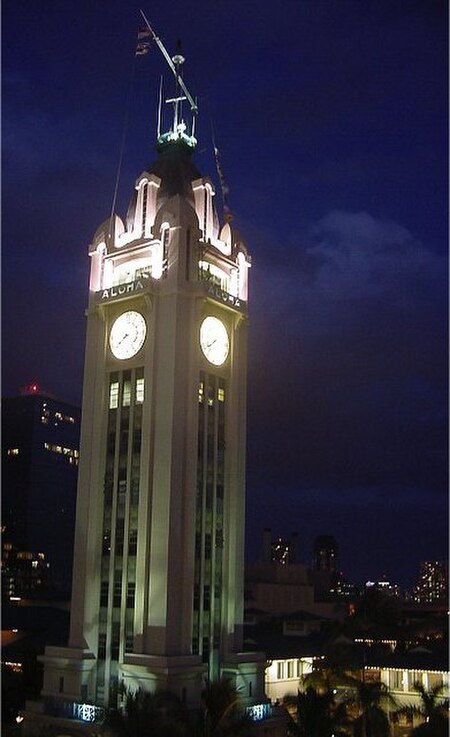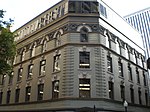Aloha Tower

The Aloha Tower is a retired lighthouse that is considered one of the landmarks of the state of Hawaii in the United States. Opened on September 11, 1926, at a then astronomical cost of $160,000, the Aloha Tower is located at Pier 9 of Honolulu Harbor. It has been, and continues to be, a guiding beacon welcoming vessels to the City and County of Honolulu. Just as the Statue of Liberty greeted hundreds of thousands of immigrants each year to New York City, the Aloha Tower greeted hundreds of thousands of immigrants to Honolulu. At 10 stories and 184 feet (56 m) of height topped with 40 feet (12 m) of flag mast, for four decades the Aloha Tower was the tallest structure in Hawaii. It was built in the Hawaiian Gothic architectural style.
Excerpt from the Wikipedia article Aloha Tower (License: CC BY-SA 3.0, Authors, Images).Aloha Tower
Aloha Tower Drive, Honolulu Chinatown
Geographical coordinates (GPS) Address External links Nearby Places Show on map
Geographical coordinates (GPS)
| Latitude | Longitude |
|---|---|
| N 21.307083333333 ° | E -157.86597222222 ° |
Address
Aloha Tower
Aloha Tower Drive
96850 Honolulu, Chinatown
Hawaii, United States
Open on Google Maps









